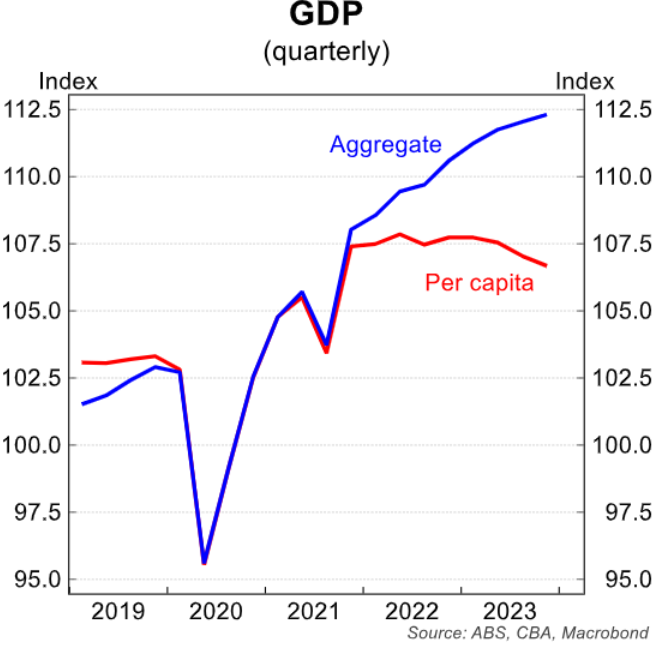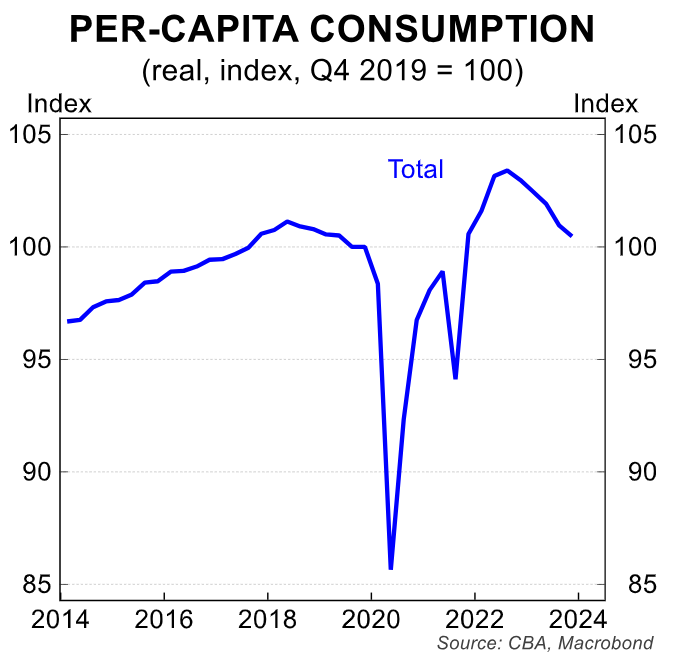On this week’s Treasury of Common Sense on Radio 2GB I discussed the Q4 National Accounts data from the Australian Bureau of Statistics (ABS), which showed that Australian households are in a deep recession.
I also discussed the latest housing data, which portends a deepening of Australia’s rental crisis.
Below are key extracts from the interview.
Edited Transcript:
The Australian economy grew by only 0.2% over the quarter, and that was below what economists expected and slightly below the Reserve Bank’s expectations.
What delivered Australia’s growth over that quarter was a big rise in net exports because we imported less and there was less demand in the economy.
The thing that matters for us is obviously per capita terms. So once you strip out our population growth, the economy per person went backwards by 0.3% and it was also 1.0% lower in 2023.

It was another case of the economic pie growing, but everyone’s slice of the pie shrinking. And the reason for that is obviously, we’re running a huge immigration program.
That’s keeping the economy growing, albeit very slowly. But everyone’s slice of the pie shrank. And the worst aspect of this was that once you adjusted for population growth and inflation, household consumption actually plunged by 2.5% last year.

That’s absolutely incipit, and it shows we all went backwards a lot quicker than the economy did in per capita terms.
The household sector has been smashed, and it’s pretty obvious why. Incomes went backwards over the year, there’s higher mortgage rates; average taxes paid have gone up; all these sorts of things.
The key takeaway is that although the economy was a tiny bit softer overall than what the Reserve Bank was expecting, the Reserve Bank had penciled in much stronger consumer spending, which is arguably its key input for interest rates.
Just to put that into perspective, overall household spending including population growth only went up by 0.1% over the quarter.
In November last year, the Reserve Bank forecast that it would have gone up by 1.1%. And in February 2024, the Reserve Bank revised that down to 0.4%.
So even with that downward revision in February, consumer spending was a lot weaker than what the Reserve Bank expected. And that tells us that the RBA will probably be bit surprised by the weakness in the household sector.
It’s a lot weaker than they expected. Pretty much all the economic indicators that have come out in the last few months have been weaker than what the RBA expected.
We had lower inflation than they had forecast, retail sales have fallen a lot quicker than they expected, the unemployment rate has risen faster than they expected, and now we’ve obviously had slightly worse overall growth but much worse household consumption growth than what the Reserve Bank expected.
So, this supports the view that interest rate cuts are going to come down sooner rather than later.

